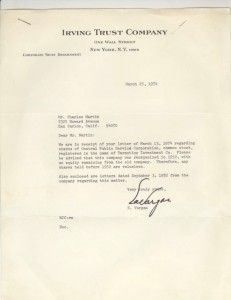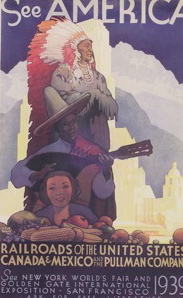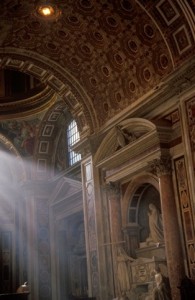Story by June Morrall Email June ([email protected])
1890s: The Coastside Advocate’s Poetic Editor Visits “The Purisima”
Known for his passionate prose, Half Moon Bay newspaper editor Roma T. Jackson complained bitterly that the locals did not appreciate the natural beauty of the Coastside. When the subject came up, Roma got very angry and wagged his finger in warning. If folks didn’t wake up, he said, and capitalize on the potential of their richly endowed surroundings, then, outsiders would do it for them.
What did that mean? “Outsiders would do it for them?” Jackson knew exactly what he was saying: “it” meant humiliation for the locals on a grand scale.
Roma T. Jackson strongly believed that fame and fortune awaited beautiful Half Moon Bay if she chose to follow the business plan of “popular pleasure resorts.” In the 1890s there were many success stories to point to including the resorts at Santa Cruz and Monterey/Carmel.
On the pages of his newspaper, the Coastside Advocate, Mr. Jackson revealed that visitors had wondered aloud (and within his earshot)…”why the people here do not avail themselves of the varied attractions which nature has so lavishly bestowed upon them. Here, they say, is one of the finest and safest beaches for surf bathing that can be found on the whole coast, and yet there is not a single bathhouse, public or private.”
[As a historic footnote: In the early 1900s, a two-story public bathhouse was built overlooking El Granada Beach, also known as “Surfer’s Beach.” In the 1920s, during Prohibition, the bathhouse was converting into a home, with family members, both adults and teenagers farming chokes and sprouts, and doing some bootlegging on the side.]
Roma Jackson hadn’t finished his editorial extolling the Coastside’s natural wealth. But did he go overboard? Did he heap too much praise on Half Moon Bay?
“Here is also the most wonderful moss beach,” Jackson wrote,”on the continent and yet it is hardly known outside the neighborhood, and not even appreciated there. Here are some of the most attractive redwood forests and pleasant mountain retreats in the state, besides hunting and fishing grounds innumerable, and yet they are frequented by but a comparatively small number of pleasure seekers each season.”
Jackson’s love of the Coastside led up to his well known warning: “We who live adjacent and right in the midst of these wonderful attractions under-appreciate their importance, and when the time soon comes that outside enterprise and capital will open them up to the public, advertise them and reap a rich reward, then we will repent not having improved the opportunities so long open to us.”
When it came to the Coastside’s future, Roma displayed a missionary zeal. His emotions ran deep about her vast potential. One good example was a story he wrote describing a heavenly carriage ride into the Purisima Canyon, sometimes also spelled Purissima. With its constantly changing scenery, a visit to pretty Purisima topped the list of many.
It was early spring, a sun-shiny Sunday morning when the Roma T. Jackson entourage set out for a picnic in the nearby woods. The gentle ocean breeze fluttered over the green fields, and Roma said he felt like a new man driving one of William Nelson’s “family chariots, with the requisite amount of equine power to locomote it.” Jackson wrote:” …the drive to Purissima from Half Moon Bay soothes a tired brain with dreamy fancies, causing the mind to dwell only on the happiest phases of rural existence….”
As he “sallied forth” in the chariot, the curious Jackson tried to sort out the highlights of the passing bucolic scenery. This was hard because sightseeing was limited for a horse and carriage on a bad road. If he had been a passenger on the Ocean Shore Railroad, he might have enjoyed the rolling landscape as it unfolded before him like a moving panorama. To the east he admired the fields of grain that rose on the gently sloping hills, “whose sheen of emerald is bespangled with grazing herds and white farm houses.” To the west the fields spread “…to the very bank beneath which the restless waves break on a sandy beach…”
The only blot on this pastoral scene was the curl of black smoke emanating from the occasional passing steamer at sea. When the Jackson party reached their destination, Purissima Creek, famous for trout fishing, the editor suggested they crack open a bottle of wine. (This is what he actually wrote: we were “overcome with an intense longing to … imbibe some of the famous Purissima water diluted with — with — a stick in it, but out of both fear and respect for the feminine portion of the party, the desire was suppressed…”
[This emotional reference to water with a stick in it must have made sense to Coastsiders in 1891, but I have no clue to its present day meaning.]
The carriage rolled through the miniscule hamlet of Purissima, and onto the road that wound back into the Borden & Hatch Redwoods. For several miles a broad vista of farms, gardens, dairies, and orchards fanned out before Jackson and his friends. These were the ranches belonging to Jorden, Taylor, Cowell, Shoults, Banghart, Campbell, Nelson, McGovern and Higgins.
Three miles later the scenery abruptly changed. The valley narrowed until it was called a canyon.
“Precipitous hills thickly studded with stately redwoods” replaced the green slopes where cattle had grazed “knee deep” in the grass. “Up through the semi-darkness of the shadowy canyons,” Jackson penned that in the distance he could see “somber ghosts of once stately trees that long since fell victims to the woodsman’s ax…
“…In the bottom of this picturesque canyon, the Purissima Creek babbles along through miniature waterfalls, shallows and eddies, where the speckled trout ….darts hither and thither…in the azure depths overhung by feather ferns…”
When Roma and his friends entered the heart of the redwood forest, they saw the famous
Borden & Hatch lumber mill. Nearby stood a cluster of houses occupied in the summer when the “engines were put in motion and the huge saws sung through the logs.” The shingle mill stood half a mile above the lumber mill.
After inspecting Borden & Hatch’s, Roma Jackson put on his “photographer’s hat,” snapping beautiful images of the scenery. [And how I wish I knew what happened to those photos!]
A wool blanket was spread beneath a grove of towering redwoods, and at noon the friends enjoyed a delicious lunch accompanied by a bottle or two of fine champagne.
In the 1890s the carriage ride into Purissima Canyon became a popular day trip.


 [Vintage poster from Swann Auction Galleries, please click
[Vintage poster from Swann Auction Galleries, please click 
 (Photo by Larry McCloskey) Nice shaft of light.
(Photo by Larry McCloskey) Nice shaft of light.
